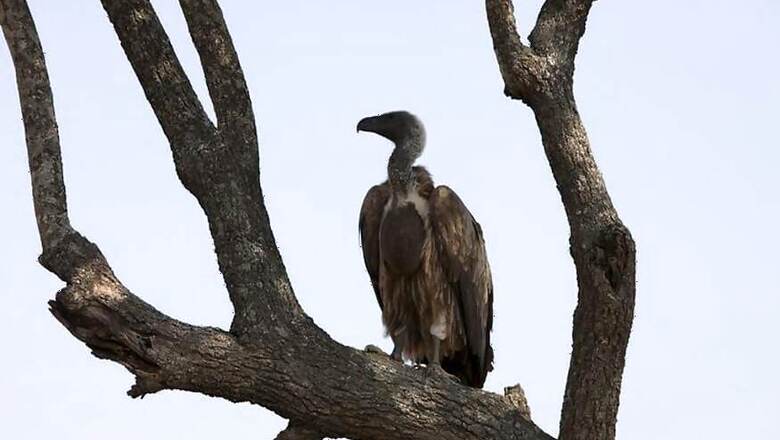
views
New Delhi: The vulture population in India has declined by a shocking 99.95 per cent since the 1980s, Union Minister for Environment, Forest and Climate Change Prakash Javadekar revealed in Parliament on Friday.
In the 1980s, there were around 40 million vultures in India primarily belonging to three species - White-backed Vulture, Long-billed Vulture and Slender-billed Vulture. As of 2017, that number has dwindled to a paltry 19,000.
BJP’s Jamshedpur MP Bidyut Baran Mahato and Shiv Sena’s North-West Mumbai MP Gajanan Kiritkar asked the Environment minister whether the government had carried out any surveys on the species of vultures and if any, then demanded for its details.
The Bombay Natural Society (BNS) carries out a survey – sponsored by the Ministry of Environment, Forests and Climate Change (MoEFCC) – of mainly three major endangered species of resident Gyps vultures, White-backed Vulture, Long-billed Vulture and Slender-billed Vulture.
Javadekar, in a written reply said, “These three species were very common in the Country with an estimated population of 40 million in early eighties. Based on the latest survey carried out in the year 2015 and the results published in 2017, there were about 6000 White-backed Vultures, 12000 Long-billed Vultures and 1000 Slender-billed Vultures.”
Admitting to the sharp decline in the vulture population, the minister added that the crash in population was first observed in the mid-nineties. “... by 2007, there was a 99% decline in the population of three resident Gyps species of vulture. By the year 2011, the population though very small appeared to be establishing but during the year 2015, it was noticed that the White-backed Vulture population was still stable but was still declining for Long-billed Vulture,” he said.
One of the reason behind the staggering decline in vulture numbers is the use of a certain drug that is given to cattle to alleviate pain. When vultures consume the carcass of animals that were administered this drug, it proves to be fatal for them as it causes kidney failure.
To conserve the population of these natural scavengers, 8 Vulture Conservation Breeding Centres were established in the different States of the country.
“Four of the centres, Pinjore in Haryana (established in 2004), Rajabhatkhawa (established in 2006) in West Bengal, Rani in Assam (established in 2009) and Kerwa near Bhopal (established in 2008) are managed by respective State Forest Departments with support from Bombay Natural History Society and Ministry of Environment, Forest and Climate Change. Four more centres i.e. Junagarh in Gujarat (established 2006), Nandankanan in Odisha (established 2006), Hyderabad in Telangana (established 2006) and Muta in Ranchi are established in the State Zoos and are being run by State Forest Department with support from Central Zoo Authority (CZA) of MoEF&CC and technical support from Bombay Natural History Society,” Javadekar said.



















Comments
0 comment